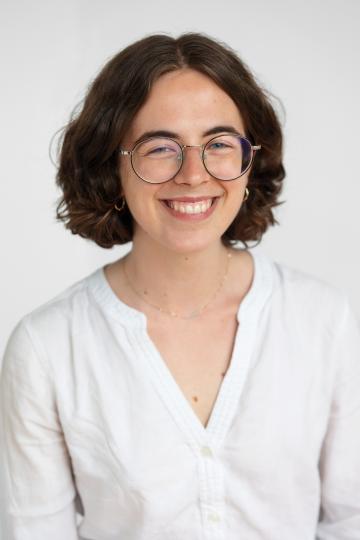All (?) Three-Part Variations on Three Different Kinds of Cubes
Project Title
All (?) Three-Part Variations on Three Different Kinds of Cubes: Examining Sol LeWitt’s Structures
Faculty Mentor(s)
Project Description

Bridges Conference July 2023 Presentation
Project Description:
The Allen Memorial Art Museum in Oberlin, Ohio has in its collection a work by Sol LeWitt entitled 49 Three-Part Variations on Three Different Kinds of Cubes. LeWitt uses three different types of white enamel-coated steel cubes: one that has all six sides, another that has two opposite sides removed, and a third that has only one side removed. He places these in towers of three cubes stacked on top of one another, with the removed sides always perpendicular to the floor. We saw this work on display and immediately thought of the mathematical problem that the title and work itself inherently assume: using this construction of three different kinds of cubes arranged in this three-part way, how many distinct variations are there?
Why is your research important?
It is important to lift up interdisciplinary research like this. We have also committed to making mathematics more accessible by working with the Allen Memorial Art Museum to create the exhibit Counting in Art and Math with Sol LeWitt, now on display in the Education Hallway. We also gave a talk at the Bridges Math Art Conference in July 2023, where many other math artists found import in the work we had accomplished.
What does the process of doing your research look like?
We initially started by enumerating the variations by hand, which took a great deal of diagrams, lists, and models. We were then able to verify our findings using Burnside’s Counting Theorem, a result from Group Theory.
What knowledge has your research contributed to your field?
Mathematical analyses of art have been done, but not on a wide scale or for a large audience. This represents a new direction in which mathematical research can be of service and of import to the wider community.
In what ways have you showcased your research thus far?
We presented at the Bridges Math Art Conference in Halifax, Nova Scotia in July 2023, and we also had a paper accepted to the Bridges Archive. We currently have an exhibit about our research on display at the Allen Memorial Art Museum. We gave a talk for the math department in Fall 2023, and gave a talk for the AMAM in May 2024.
How did you get involved in research? What drove you to seek out research experiences in college?
This research actually grew out of a midterm project for a class that I took in Spring 2022 with Professor Bosch, Seminar in Mathematical Modeling and Applications to the Visual Arts. I initially took this on as my midterm, and ended up discovering the missed variation. I continued working on applications of this work for my final, and began a formal research course with Professor Bosch the next semester.
What is your favorite aspect of the research process?
I think there’s a lot of satisfaction in finding and verifying an answer to a discrete mathematical question. When we actually verified the result that I had found six months prior by use of the Burnside Counting Theorem and found that it was in fact correct, I cried. It was just very emotional to have finally verified the right answer after so much work.
How has working with your mentor impacted the development of your research project? How has it impacted you as a researcher?
Bob has been so impactful to my research process and my time here at Oberlin. He’s always been so supportive of me, and actively looks for opportunities to help and promote me, which I appreciate immensely.
How has the research you’ve conducted contributed to your professional or academic development?
It’s so cool to be graduating college having a published paper, a talk at a conference, and a museum exhibit all under my belt. I’m so grateful for the opportunities that I’ve been given and I know that these will be so valuable to my professional pursuits after graduation.
What advice would you give to a younger student wanting to get involved in research in your field?
I would advise younger students to talk to professors, because most of the time they’re really willing to help you. I think it’s especially important for minority students in STEM to speak up about their needs, because the departments here are not always equipped to meet them.
Students

Ilana McNamara ’24
fifth-year- Major(s): Mathematics, Viola Performance